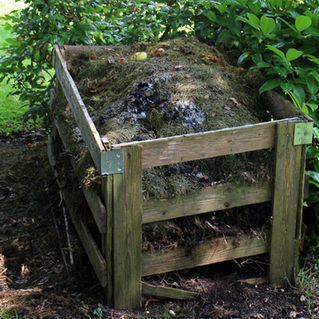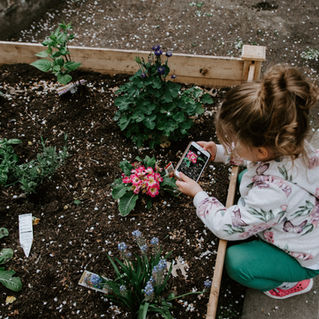top of page

Outdoor Composting
Soil Cycle offers Backyard Composting Workshops to teach individuals the basics of starting and managing their own compost system.
Picking a System
We have designed a composting flow chart to help you decide the best composting system for you.
If you have more questions, feel free to email us.
Active Compost
Hot or active composing is the process of managing your compost pile's carbon to nitrogen ratio, temperature, moisture and turning schedule more closely. Hot composting produces a finer finished product faster, can break down compostable-ware better, and can kill weed seeds and other pathogens
Passive Compost
Passive composing is the slow decomposition process that is mediated by fungi, worms, and other natural decomposers. It might be slow, but it takes minimal effort. There are multiple approaches to passive composting including: compost rings, trenching, closed-lid bins, and large piles.
Backyard Composting

Indoor Composing
Soil Cycle offers Vermicompost Workshops to teach individuals the basics of starting and managing their own worm compost system.
You can also contact us to recieve a tour of our worm composting system.
Vermicompost
Using worms to help you break down organic matter can be done in a variety of systems. Worms need air-flow, moisture, and bedding materials but they create incredible natural fertilizer.
Bokashi
Bokashi composting is an anaerobic process that relies on inoculated bran to ferment kitchen waste. Bokashi bins can process veggies, meat, and dairy safety leaving you with nutrient-rich scraps that can be buried or added to a compost pile.
-
How to Bokashi - Video
-
DIY Bokashi Bucket
-
How to Use Bokashi Bran
-
DIY Bokashi Bran
Stealth Bins
For individuals who are limited by space, finances, or hypercritical neighbors, the stealth bin provides a way to compost at home! Cornell Composting provides a simple how-to guide.
Indoor Compostig

Sustainable Gardening
Demonstration
Garden
Soil Cycle's demonstration garden showcases permaculture techniques and focuses on medicinal, edible, and native plants. We have compiled information both from Soil Cycle and from other local organizations.
-
Soil Cycle's Permaculture Video Presentation
-
11 Common Medicinal Plants Video
-
Soil Cycle Plant Tour
Using Compost
Building your own compost and soil is both rewarding and incredible for the Earth. We have compiled some sources of how to use compost in your yard and garden.
-
When is Compost Finished?(Crazy about Compost video)
-
Adding Compost in Spring (Learn to Grow video)
-
Using Compost in Your Garden (Morning Chores blog)
-
Top Dressing Lawn (Green Thumb blog)
-
Preparation for Winter (Broken Ground video)
Wildlife Habitat
Through a partnership with the National Wildlife Federation we teach gardening for wildlife. Keeping water, shelter, food, and pollinators in mind provides space for both humans and nonhuman species to thrive.
-
Pollinator Garden Tips
-
Water for Wildlife
-
Food for Wildlife
-
Shelter for Wildlife
-
DIY Mason Bee House
-
DIY Bat House
Western Montana
Resources
Sustainable gardening often means small, local, and native systems. Since healthy habitats are dominated by cnative plants, we have complied a limited list of Western Montana resources.
-
Wildflower & Bee Guide
-
Montana Plant Guide
-
Pipilo Native Plants
-
Great Bear Native Plants
-
Native Ideals Seeds
-
Five Valley Seed Library
-
Grow Safe - Missoula's Organic Lawn Guide
Garden

Education for Kids
Explore More! Activities
...
Education for Kids

Understanding Food Waste
In the United States, over one-third of all available food goes uneaten through loss or waste. Food waste is a major issue that happens at all levels of the food system. Reducing food waste can impact climate change, soil health, food security, and landfilling issues. There are many wonderful resources available that explain this issue in greater depth and offer tools to help. Here is just an overview.
Agricultural
Food takes many precious resources to grow and is "wasted" at every level of the food system. Agricultural food waste happens for a few major reasons:
Cosmetically Imperfections
Low Prices
Labor Shortages
Unpredictable Conditions
Overproduction
Distribution Challenges
Commercial
Once food has left the farm, it is often wasted in the distribution process, at stores, and in restaurants. When your businesses relies on food, food waste becomes both a financial and environmental concern.
Businesses can reduce waste by:
Increasing Inventory Management
Work Closer with Producers
Track Food Waste
Donate Food
Residential
USDA estimates of 31% of food waste happens at the retail and consumer levels. This added up to approximately 133 billion pounds and $161 billion worth of food. To help reduce food waste:
Buy with Meals in Mind
Love Leftovers
Freeze Excess
Store Food Correctly
Get Creative with Scraps
Compost the Rest;
Sign Up for Collection Services
Environmental
Impact
When organic materials, like food go to the landfill, they get buried (often in plastic containers) and anaerobically decompose extremely slowly. When food decomposes this way it releases methane, a greenhouse gas 25x more harmful than carbon dioxide. Eliminating food scraps from landfills would be equivalent of removing 20% of all the cars in the country from the road.
EPA
NRDC
ReFED
Move for Hunger
The Power of Waste
Food Waste
bottom of page









